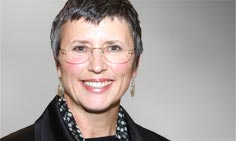NEXT month, six Aboriginal Medical Service health workers will walk out of the University of NSW with public health qualifications.
Another 56 Indigenous medical students are currently studying at the university — the largest Indigenous cohort in a medical program in the country — along with about 10 Aboriginal students currently working towards higher degrees across UNSW Medicine.
As the Abbott government promises a renewed focus on Indigenous health, it would be wonderful to think that one day we will have health services delivered to all Aboriginal and Torres Strait Islander peoples that are informed by Indigenous world views and appropriate practice. However, that remains a distant ideal.
Of the roughly 700 000 people in Australia who identify as Aboriginal and Torres Strait Islander, half are under the age of 21 years. Of these, most are still in school. And, of the small but growing proportion of Aboriginal and Torres Strait Islander children who will go on to tertiary education, a fraction will work in health and health-related fields.
So, if Aboriginal health must continue to be largely delivered by the general health workforce into the foreseeable future, it must be done so in a way that privileges the health knowledge that our many Aboriginal and Torres Strait Islander peoples have built over tens of thousands of years.
The deep understanding of health and wellbeing held by our peoples provides a valuable model for Australia as a whole.
A lot has been said about change, but I believe change is not only possible, but that today we know and understand the way we should and must be heading.
We know that the compromised social and emotional wellbeing of young Aboriginal and Torres Strait Islander Australians is a central barrier to their realising their full potential in health, in education, in life.
Many years and many millions of research dollars have been invested in defining, quantifying and cataloguing the negatives — disgraceful health outcomes, the inability of many existing programs to achieve any real improvements, and the sequelae of continued disadvantage and intergenerational grief. Too many of our young people are caught up in emotional turmoil, reinforced by societal structures that inhibit their aspirations.
To enable and empower young Aboriginal and Torres Strait Islander people, we need to value their contributions as young people in their own right as well as their potential as future leaders in their communities.
Our research at UNSW Muru Marri shows this is possible — that Aboriginal young people can be encouraged by providing rich and flexible opportunities to discover and celebrate their Aboriginality; that if young people have the space to heal, create and have fun, they can meet their goals and become the much needed health leaders of the future.
The Aboriginal and Torres Strait Islander health workforce is critical to the success of programs aimed at closing the gap. It is therefore vital that these opportunities to grow the workforce are supported by everybody.
We might not be able to produce enough Aboriginal and Torres Strait Islander doctors and public health workers to meet the extent of all our communities’ needs — the low numbers of our tertiary graduates makes this clear. But highly qualified Aboriginal and Torres Strait Islander health workers, like those about to graduate from UNSW, can lead the way.
Most tertiary institutions have targets for recruiting Aboriginal and Torres Strait Islander students and strategies to support students to graduation and employment.
UNSW Medicine’s Indigenous student cohort approach in both its undergraduate and postgraduate programs is notable. Championing such strategies more broadly is our current challenge and relies on leadership at community, institutional and government levels.
Our experience at Muru Marri shows that all public health students benefit from Aboriginal and Torres Strait Islander peoples’ input, in class and in practice.
The Aboriginal world view has informed much of health care as we know it. Several primary health care and chronic care packages were born out of services designed by and for Aboriginal communities.
Health interventions can only work if they are effective and culturally appropriate and delivered in ways that address the social, emotional and cultural wellbeing of the entire community.
By teaching and mentoring even a small number of Aboriginal health workers to foster skills that can be translated into meaningful programs in their communities, we can create health care models that are applicable to everyone.
Professor Lisa Jackson Pulver, an Aboriginal woman, holds the inaugural chair of Indigenous health and is a professor of public health at UNSW. She is also Director of Muru Marri.
Photo: Grant Turner, Mediakoo

 more_vert
more_vert
So we have 700,000 peop,le declaring themselves as ATSI. and we know that 50% are under the age of 21. Do we also know how many live in urban or egional areas of the country? Because it is my belief that we should be concentrating on the people who live in the remote communities in the country with such a dramatically lower life expectancy than the many who live in urban areas with access to and an understanding of the need for education and are much closer to the day to day health care, rented homes, employemnt opportunities and otjher factors that contribute to a different asgian world view to those from remote.
Too often I see pleas such as in this article and the generalisation that all ATSI people are the same and with the same world view. I suggest this is not the case and the sooner we (white people or non Aboriginal people) recognise this the better for the design of services to suit the ancient world view of the traditional Aboriginal people and not necessarilty the urbanised world view of probably the majority. Percentage please of the proportion. Thank you.